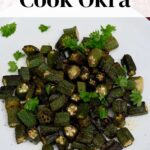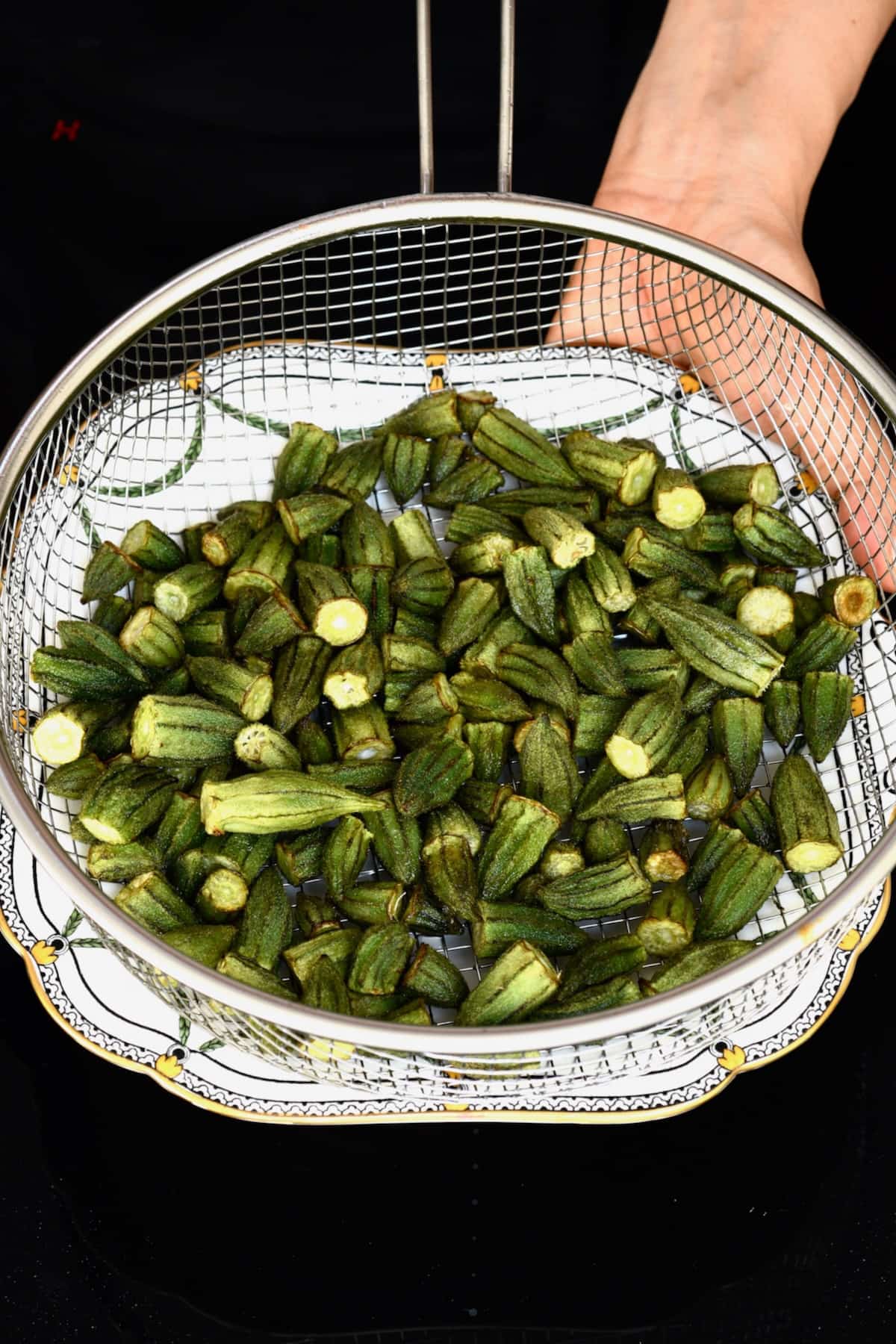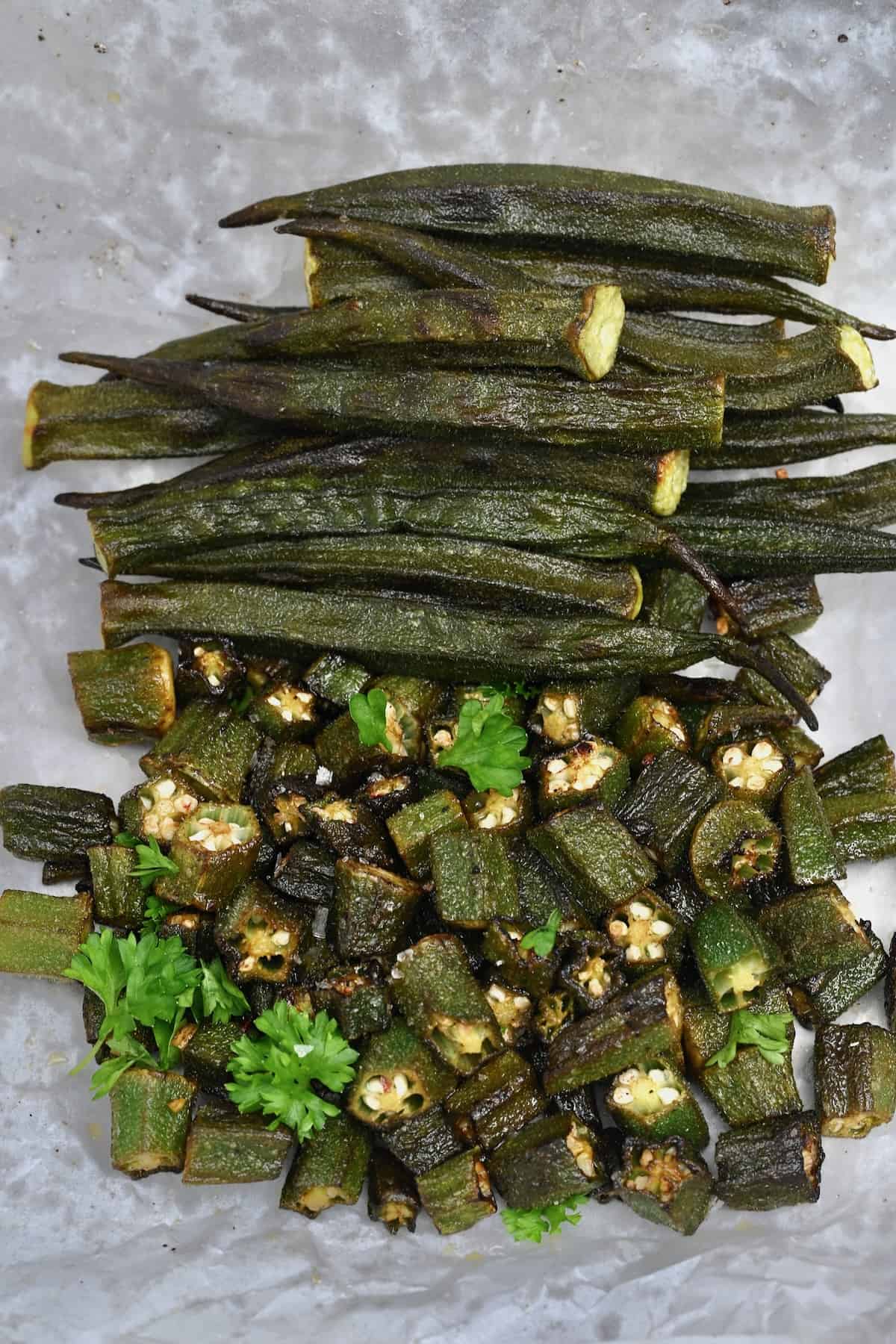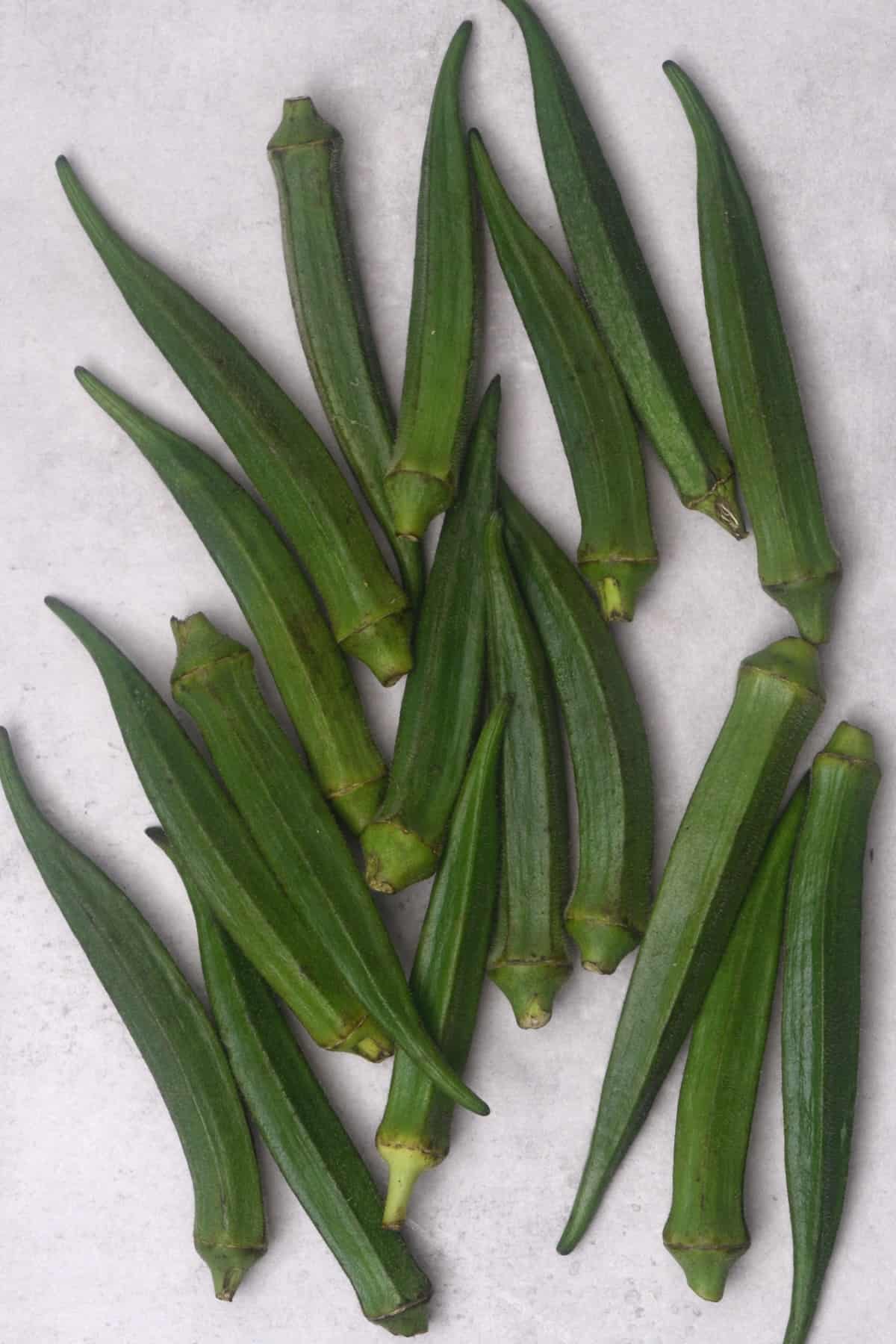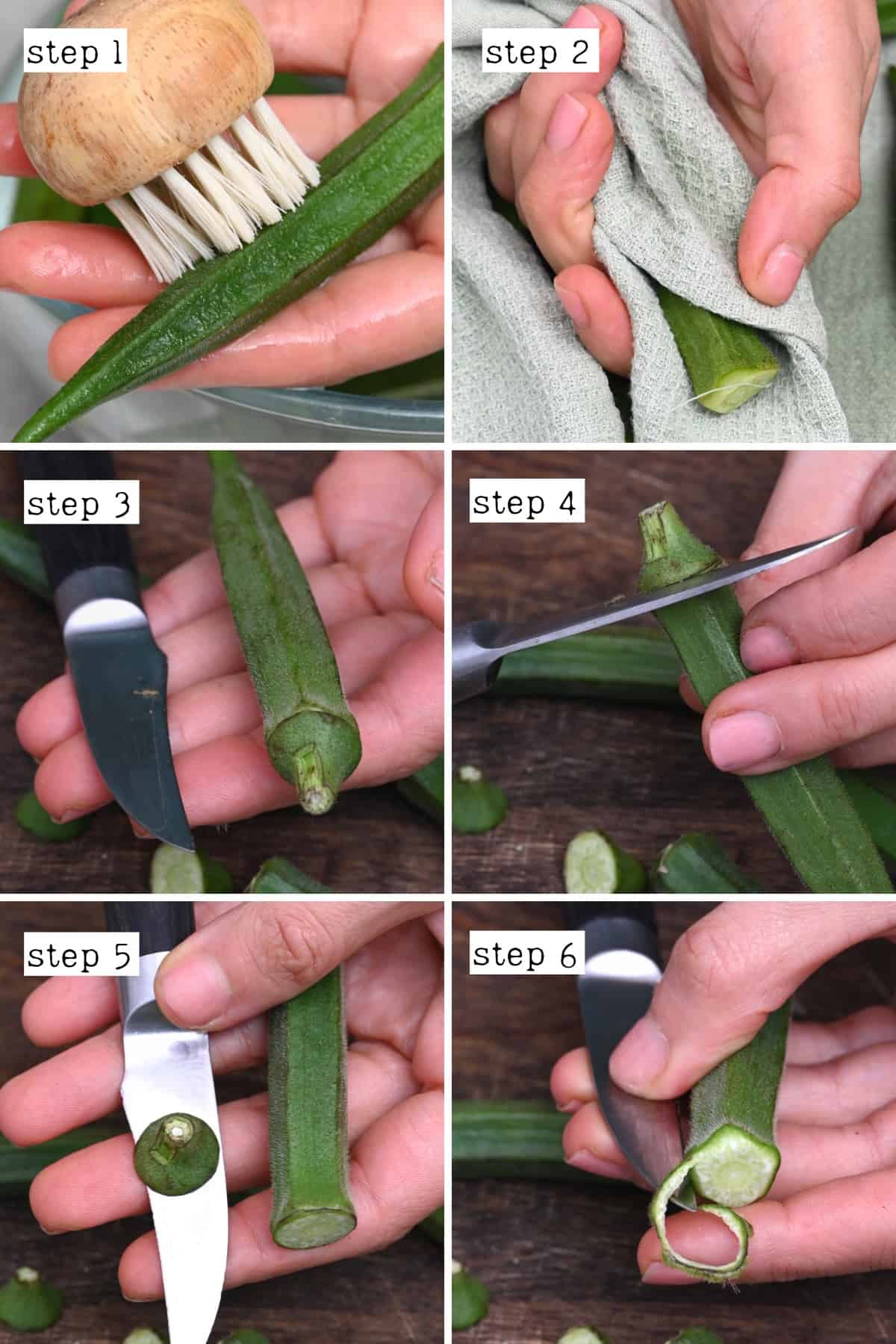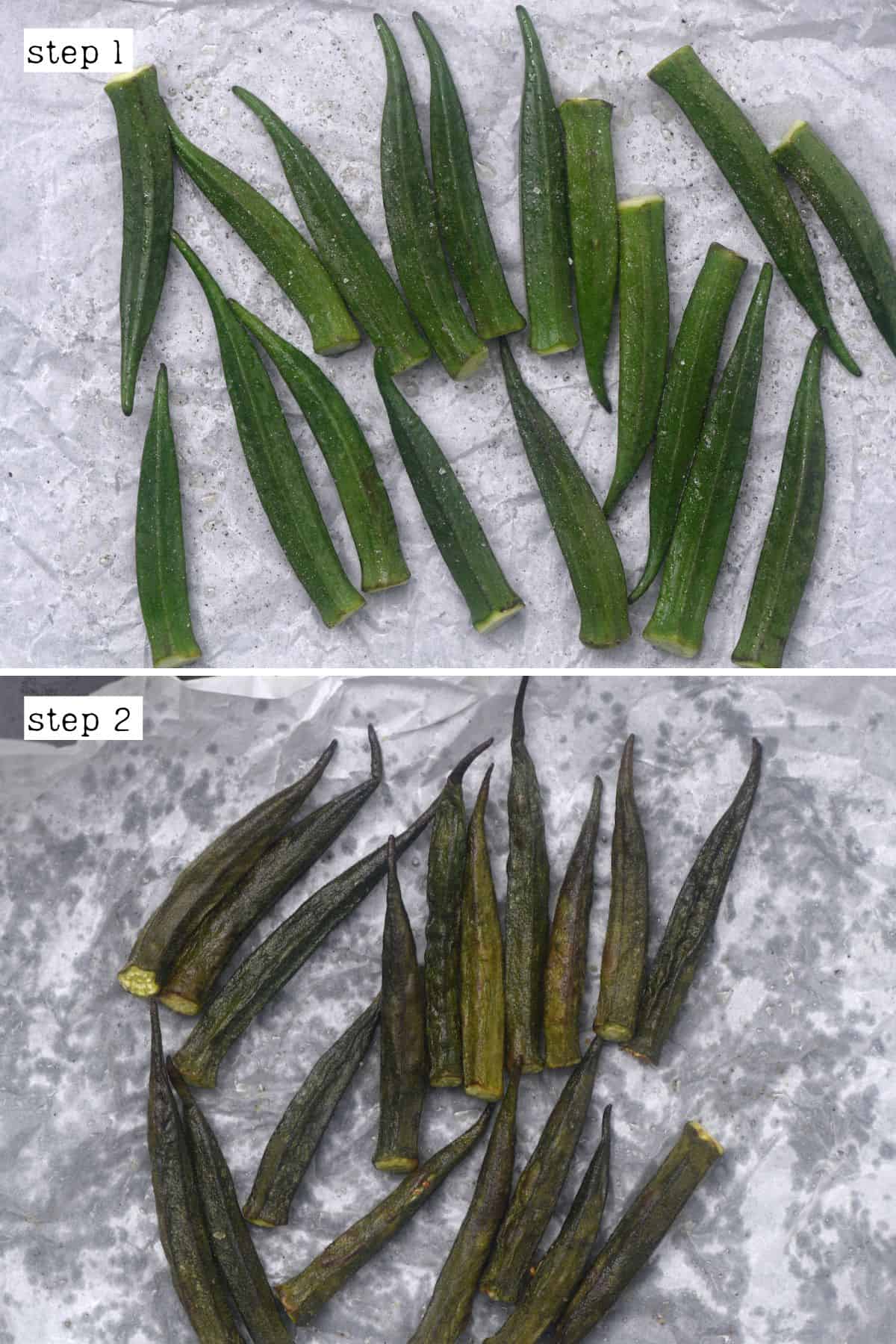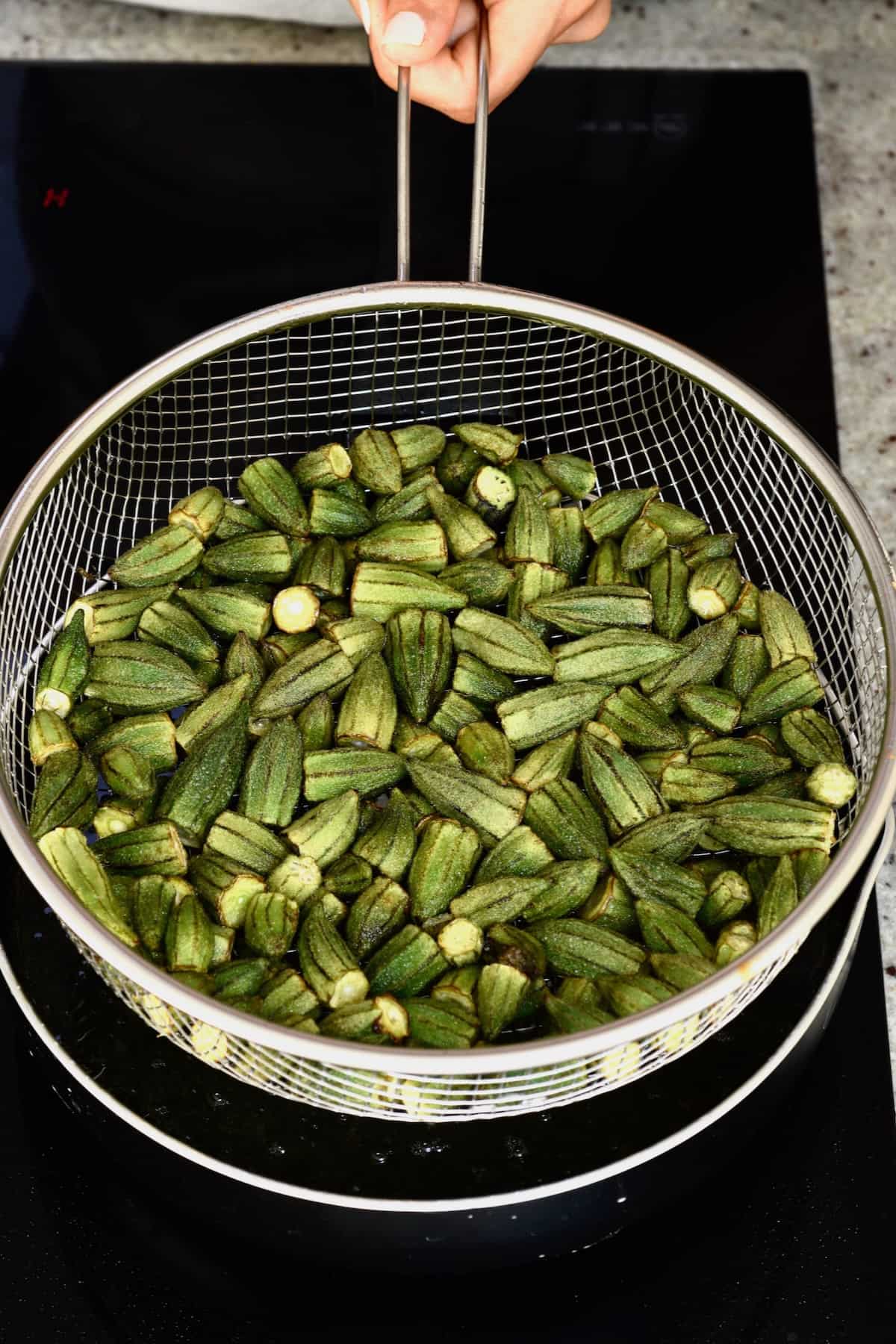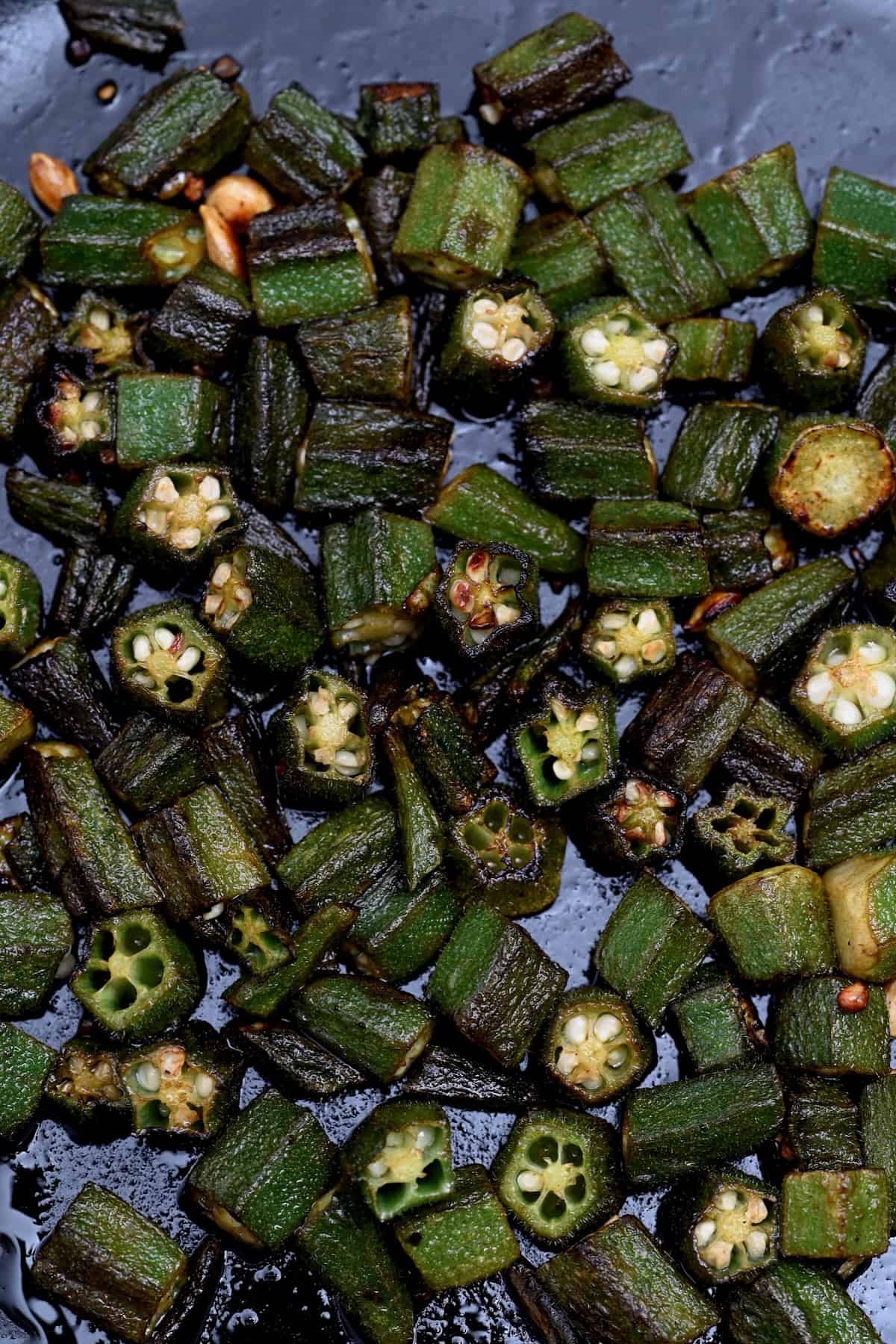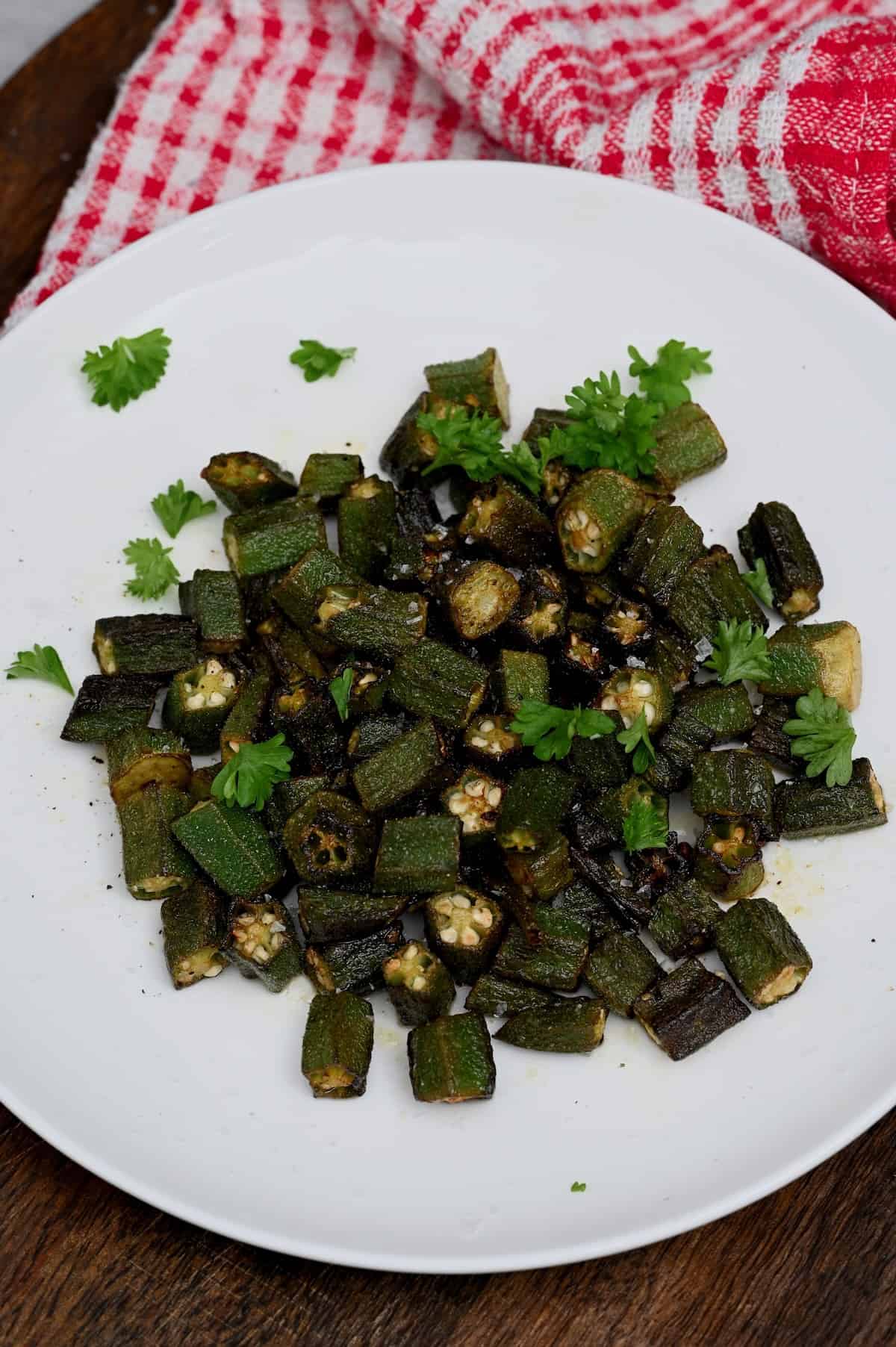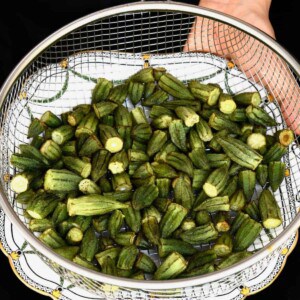Okra is a staple in recipes across several countries and the Southern states of the US, yet it is surprisingly underrated. This may, in part, be due to its “slimy” reputation. Luckily, with the right cooking method and top tips, learning how to cook fresh okra is sure to be the start of many easy okra recipes in your future. With options including roasting, frying, air frying, boiling, sautéing, and deep-frying, there’s no lack of ways to cook okra. Keep reading to learn more about okra, its health benefits, how to select and store it, cooking okra to perfection, and – most importantly – avoiding any unwanted slime!
What is okra?
Okra or okro – also called “lady’s fingers” or “gumbo” – are the edible green pods from a flowering plant (Abelmoschus escelentus) in the mallow family grown in tropical, subtropical, and warm temperate regions. It is a US Southern staple. Plus, it is known as the national vegetable of Pakistan even though it’s technically a fruit. Popularly, it’s fried, grilled, turned into quick-pickled okra, sautéed, and stewed. However, it’s also mucilaginous – it will create a goo/slime when introduced to water. This means it can act as a natural thickener for soups and stews but it also requires some special attention to avoid excess sliminess.
What does okra taste like?
Okra has a very mild grassy flavor, comparable to green beans or eggplant, with a peachy fuzz on the outside of the pod. However, the texture sets it apart. It goes from crisp and juicy when cooked quickly to a kind of melt-in-the-mouth creamy, tender texture when cooked low and slow.
What is okra good for
Raw okra is about 90% water, 7% carbs, and 2% protein, has very little fat and is a rich source of several micronutrients. These include dietary fiber and antioxidants. The combination of its nutrients leads to a lower risk of developing health conditions like diabetes and heart disease. It has detoxifying benefits, may lower cholesterol, increase bone health, improve skin health, etc.
How to select okra
Select pods that are firm but not hard and taut (not shriveled or soft). Avoid okra that has blemished skin, any holes, or is overly dark on the ends. A little browning is fine, but the greener it is, the fresher it is. To check for freshness, bend the tail end of one pod with your thumb. If it snaps off, it’s fresh. If it bends or feels rubbery, avoid it. Note that okra is in season in the US between May and September but can be found year-round in the South and can be purchased frozen, too. Once purchased, it’s best to store the pods in a paper bag (not an airtight container) in a crisper drawer for up to 4 days, though cooking them within a day or two is best.
How to cook okra without the slime (6 methods)
Okra is easy to prepare and cook in multiple ways. With the right cooking method, you can reduce (and even prevent) the pods from becoming slimy!
How to prepare okra
Before cooking the pods, you’ll first need to prepare them. Make sure to only wash them just before cooking to avoid mucilage. Depending on which cooking method you plan to use, cut the okra – do so crosswise into round slices, at a bias (diagonally), lengthwise in half, etc.
Roasted okra
Roasting okra helps to bring out the flavors and provides a crisp texture. Note that whole oven roasted okra tends to be slimier than cut pieces.
Air fryer okra
The method of how to air fry okra yields similar results to roasted but in slightly less time (and sometimes crispier). For extra flavor, you could season the air fried okra (or the roasted okra recipe) with garlic powder, paprika, cayenne pepper, or seasoning blends like Cajun seasoning.
How to air fry frozen okra
Follow the same method above, air frying whole okra for 15-18 minutes, shaking the basket halfway. If air frying smaller pieces, air fry for 10-14 minutes.
Fried okra
Fried okra recipes are one of the most popular. This method is quick (meaning less slime), delicious, and a Southern staple. Note that you can fry small okra whole OR cut larger ones down into 1-inch pieces. You can also fry battered okra rings using cornmeal or a 50/50 blend of flour and cornmeal. Start by dipping the pieces in egg wash, then the coating, and then fry in batches for 4-6 minutes or until tender.
How to fry frozen okra
It’s best to thaw the okra first when frying it, as oil can spatter wildly when any ice is introduced and can cause serious harm. So, instead, thaw and dry the okra first, then continue with the above method.
Sauteed okra
This quick, high-heat cooking method helps to avoid a slimy texture while making a delicious, crisp gluten-free side dish. You can season the pan-fried okra recipe with salt and pepper, soy sauce instead of salt, garlic, ginger, onion, red pepper flakes, cumin, other spices, etc. Optionally add fresh lemon juice to further reduce okra sliminess.
Grilled okra
During grilling season, grilled okra is a great addition to any cookout. You may find it easier to create skewers of okra pods so they’re easy to move and flip over in one go. I recommend using two skewers for one row of pods to keep them stable and not spinning.
How to boil okra
Boiled okra can make for a simple side dish but leads to slimy results if overcooked. So, let’s learn how long to boil okra. Start testing the boiling okra at 3 minutes and every minute or two after that. Be careful not to overcook it, or it becomes slimy.
BONUS: Okra stew recipe
Technically, this isn’t another cooking method, as the okra is fried before being added to the stew. However, it IS one of my favorite ways to consume this ingredient, so I HAD to include it in this list of how to fix okra.
How to keep okra from sliming
Due to its mucilaginous nature, the soluble fiber in the pods dissolves in water (and increases further when cooked), producing a slimy, gooey texture, which can be hard to avoid. While some people love it, it’s not universally enjoyed. Luckily, there are tips for almost every stage of dealing with okra to help prevent unnecessary sliminess:
Remove as much water as possible: After washing the pods, it’s essential to dry them thoroughly. Any extra liquid in the cooking process will encourage sliminess. Soak it in vinegar: A tried and tested method that many rely on to avoid slimy okra is to soak it in a vinegar bath for 30 minutes (use ½ cup/125ml vinegar for every 18oz/500g okra). Then rinse, dry well, and cook it. The acidity helps to break up and dissolve the slime.
Another way to de-slime okra is to cook it with acidic foods, like tomatoes, lemon, etc. This is the reason pickled okra works so well.
Use high heat, quick cooking methods: Cooking okra by deep-frying and sautéing/stir-frying is great. These quick methods prevent the sugars that create the slime from releasing too much.
How to store okra
Once cooked, it’s best to store any leftovers in an airtight container in the fridge for up to 3 days.
How to freeze okra
You can freeze okra either raw (and blanched) or cooked – I prefer the latter. Flash freeze on a baking tray (to avoid sticking), then transfer to a freezer-safe Ziplock for 3-4 months. How To Cook Frozen Okra? You can first thaw the okra in the fridge or cook it from frozen. Add a few extra minutes when cooking from frozen (thaw it first when frying).
More ingredient how-to’s
How to Cook Asparagus How To Cook Eggplant Prepare, Cut, And Cook Leeks How to Make and Cook Zoodles
If you try any of these methods how to cook okra, let me know how it goes in the comments below. I’d appreciate a recipe card rating and would love to see your recipe recreations – tag me on Instagram @Alphafoodie! Also, let me know if you’d like to see more recipes for okra!
